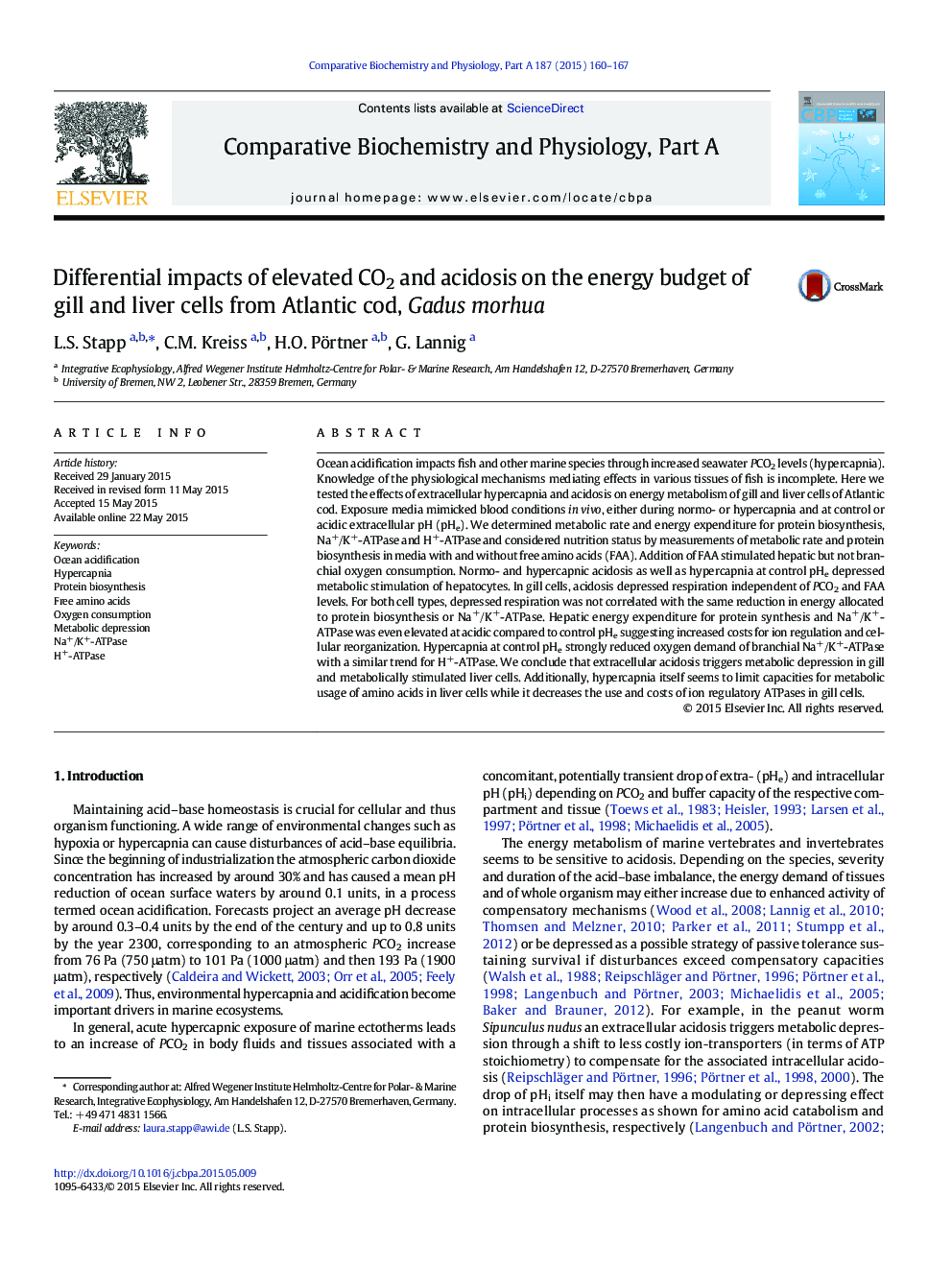| Article ID | Journal | Published Year | Pages | File Type |
|---|---|---|---|---|
| 1972030 | Comparative Biochemistry and Physiology Part A: Molecular & Integrative Physiology | 2015 | 8 Pages |
Ocean acidification impacts fish and other marine species through increased seawater PCO2 levels (hypercapnia). Knowledge of the physiological mechanisms mediating effects in various tissues of fish is incomplete. Here we tested the effects of extracellular hypercapnia and acidosis on energy metabolism of gill and liver cells of Atlantic cod. Exposure media mimicked blood conditions in vivo, either during normo- or hypercapnia and at control or acidic extracellular pH (pHe). We determined metabolic rate and energy expenditure for protein biosynthesis, Na+/K+-ATPase and H+-ATPase and considered nutrition status by measurements of metabolic rate and protein biosynthesis in media with and without free amino acids (FAA). Addition of FAA stimulated hepatic but not branchial oxygen consumption. Normo- and hypercapnic acidosis as well as hypercapnia at control pHe depressed metabolic stimulation of hepatocytes. In gill cells, acidosis depressed respiration independent of PCO2 and FAA levels. For both cell types, depressed respiration was not correlated with the same reduction in energy allocated to protein biosynthesis or Na+/K+-ATPase. Hepatic energy expenditure for protein synthesis and Na+/K+-ATPase was even elevated at acidic compared to control pHe suggesting increased costs for ion regulation and cellular reorganization. Hypercapnia at control pHe strongly reduced oxygen demand of branchial Na+/K+-ATPase with a similar trend for H+-ATPase. We conclude that extracellular acidosis triggers metabolic depression in gill and metabolically stimulated liver cells. Additionally, hypercapnia itself seems to limit capacities for metabolic usage of amino acids in liver cells while it decreases the use and costs of ion regulatory ATPases in gill cells.
